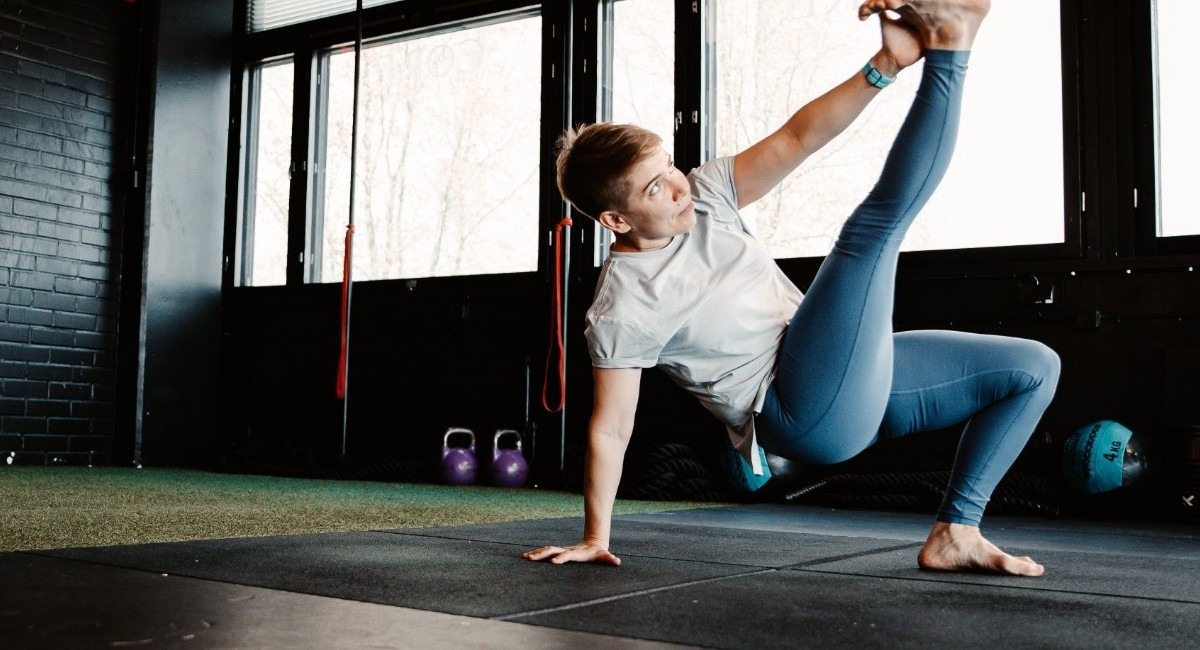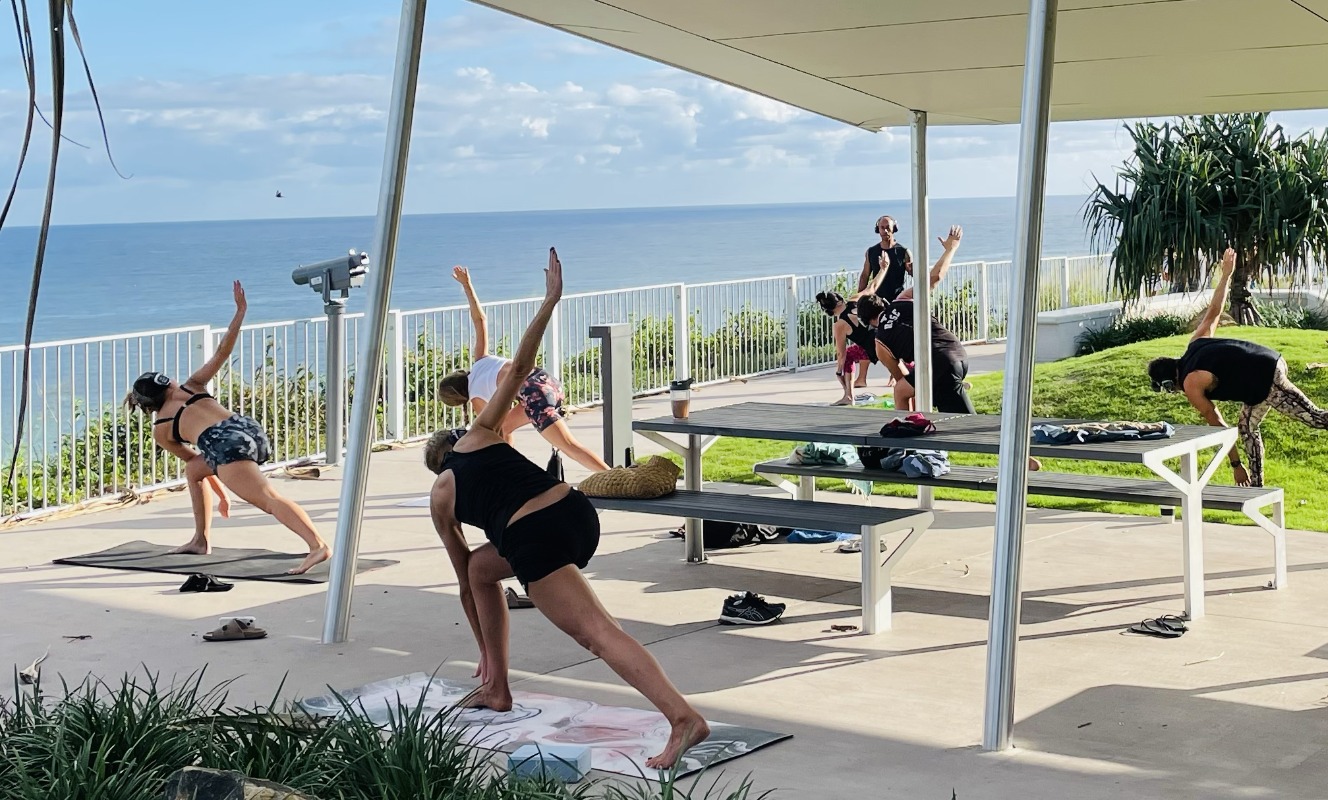
The Rise of Recovery Workouts.
Recovery workouts have moved from the sidelines to the spotlight, reshaping how athletes and everyday fitness enthusiasts train. By focusing on low-intensity, restorative activities like yoga, stretching, and mobility work, this approach helps repair muscles, prevent injuries, boost performance, and improve mental well-being — proving that training smarter often means knowing when to slow down.
💪 Fitness Guru
37 min read · 13, Aug 2025

Introduction
For decades, fitness culture has glorified “no pain, no gain.” Intense cardio, heavy weightlifting, and back-to-back HIIT sessions were celebrated as the pinnacle of dedication. But in recent years, a quiet revolution has taken over the fitness industry: recovery workouts. These are low-intensity, mobility-focused, and restorative exercise routines designed not to break you down, but to build you back up. Once considered an afterthought, recovery is now recognized as a critical component of peak performance, injury prevention, and overall well-being.
1. What Are Recovery Workouts?
Recovery workouts are light, intentional movements that help the body repair after strenuous training sessions. Instead of complete rest, they keep the blood flowing, reduce muscle stiffness, and improve flexibility without adding significant stress to the body.
Common examples include:
- Gentle yoga or stretching
- Low-intensity cycling or swimming
- Foam rolling and self-myofascial release
- Walking or light jogging
- Mobility drills
The main goal is active recovery — giving your muscles and joints the time and resources they need to heal while avoiding stagnation.
2. Why Recovery Has Become a Fitness Trend
The shift toward recovery-centered training isn’t random — it’s backed by science, lifestyle changes, and evolving attitudes toward wellness.
A. The Science of Recovery
Muscles grow and adapt after a workout, not during it. When you lift weights or perform high-intensity movements, tiny microtears form in muscle fibers. Rest, proper nutrition, and low-impact activity help rebuild them stronger. Without sufficient recovery, overtraining can lead to:
- Chronic fatigue
- Hormonal imbalances
- Weakened immune function
- Increased risk of injury
B. The Influence of Professional Athletes
Elite athletes like LeBron James, Serena Williams, and Cristiano Ronaldo openly credit recovery methods — cryotherapy, yoga, massage — as essential to their performance. Social media has amplified these practices, making them aspirational for the everyday fitness enthusiast.
C. Rise of the Wellness Industry
The global wellness market, valued at over $4 trillion, emphasizes holistic health. Consumers now seek balance over burnout. Recovery workouts fit perfectly into this narrative, blending physical fitness with mental well-being.
3. Types of Recovery Workouts
Not all recovery sessions look the same. The right method depends on your activity level, goals, and preferences.
A. Active Recovery
Light, non-strenuous movement performed the day after a tough workout. Examples:
- 20-minute brisk walk
- Light swimming
- Low-resistance cycling
- These keep your muscles warm and blood circulating without overexertion.
B. Mobility and Flexibility Work
Focused stretching, dynamic movements, and joint rotations improve range of motion and reduce stiffness.
- Yoga flows
- Pilates mobility sequences
- Resistance band stretches
C. Self-Myofascial Release (SMR)
Using tools like foam rollers, massage guns, or lacrosse balls to break up muscle knots and fascia tightness. Benefits include improved blood flow and reduced delayed onset muscle soreness (DOMS).
D. Mind-Body Recovery
Incorporating mindfulness with gentle movement helps reduce stress hormones.
- Restorative yoga
- Tai Chi
- Qi Gong
- These not only improve mobility but also calm the nervous system.
4. Benefits of Recovery Workouts
Recovery workouts offer physical, mental, and long-term performance benefits.
Physical Benefits
- Faster Muscle Repair – Increased circulation delivers nutrients to damaged tissue.
- Reduced DOMS – Gentle movement flushes out lactic acid buildup.
- Lower Injury Risk – Maintains joint health and muscle elasticity.
Mental Benefits
- Stress Relief – Lower cortisol levels improve mood and reduce anxiety.
- Increased Motivation – Light days prevent burnout and keep workouts enjoyable.
Performance Benefits
- Better Training Consistency – Active recovery keeps you moving without exhaustion.
- Improved Form & Technique – Recovery days can focus on movement quality.
5. Tools and Technology for Recovery
The rise in recovery culture has inspired new tools and tech to aid muscle repair.
A. Wearable Devices
Fitness trackers monitor sleep, heart rate variability (HRV), and recovery readiness scores, helping users decide when to push hard and when to rest.
B. Recovery Equipment
- Foam rollers – Break up tight muscle tissue.
- Massage guns – Provide targeted deep-tissue relief.
- Compression boots – Improve circulation in the legs.
C. Cryotherapy and Heat Therapy
Cold plunges, ice baths, infrared saunas, and heating pads are now common in gyms and wellness studios.
6. The Role of Nutrition in Recovery
No recovery routine is complete without proper nutrition. Muscle repair requires:
- Protein – For rebuilding tissue (lean meats, legumes, dairy).
- Carbohydrates – To restore glycogen stores.
- Healthy fats – To reduce inflammation.
- Micronutrients – Vitamins and minerals aid cell repair.
- Hydration is equally critical, as dehydration slows recovery and increases fatigue.
7. Integrating Recovery Into Your Routine
The key to effective recovery is planning it into your training, not treating it as optional.
Sample Weekly Plan:
- Mon – Strength training
- Tue – Recovery workout (yoga, walking)
- Wed – Cardio or HIIT
- Thu – Recovery workout (foam rolling, mobility drills)
- Fri – Strength training
- Sat – Light cycling or swimming
- Sun – Rest or restorative yoga
8. Common Myths About Recovery Workouts
Myth 1: Rest Days Are a Waste of Time
Fact: Recovery is when muscles rebuild — skipping it can hinder progress.
Myth 2: Only Elite Athletes Need Recovery
Fact: Beginners may benefit even more, as their muscles are not yet adapted to training stress.
Myth 3: Recovery Means Doing Nothing
Fact: Active recovery is often more beneficial than complete inactivity.
9. The Future of Recovery Workouts
With the continued integration of science and technology, recovery will become even more personalized. AI-powered apps, biometric tracking, and virtual recovery classes are likely to dominate the fitness market. Gyms are adding dedicated recovery zones, and corporate wellness programs are promoting them to reduce workplace burnout.
The Rise of Recovery Workouts has reshaped the fitness world, replacing the once-dominant “no pain, no gain” mentality with a smarter, science-backed approach that recognizes recovery as essential to performance, health, and longevity; recovery workouts are low-intensity, mobility-focused activities — like gentle yoga, stretching, walking, light cycling, swimming, foam rolling, or mobility drills — designed to promote muscle repair, reduce soreness, and keep blood flowing without adding strain, and they’ve gained popularity thanks to research showing that muscles grow and adapt after workouts during rest, not while under stress; the trend has been fueled by professional athletes such as LeBron James and Serena Williams crediting their success to recovery routines, as well as the booming $4-trillion wellness industry’s focus on balance over burnout; there are different types of recovery workouts including active recovery (light activity like brisk walking or low-resistance cycling after intense sessions), mobility and flexibility work (dynamic stretches, yoga flows, Pilates), self-myofascial release (foam rollers, massage guns, lacrosse balls to break up tight fascia), and mind-body recovery (restorative yoga, Tai Chi, Qi Gong) that also help reduce stress hormones; the benefits span physical (faster muscle repair, reduced delayed onset muscle soreness, lower injury risk), mental (stress relief, greater motivation, prevention of burnout), and performance-related (better training consistency, improved form); modern recovery tools and technologies — from wearable devices that track sleep and heart rate variability, to foam rollers, compression boots, and massage guns, to cryotherapy and heat therapy like saunas and ice baths — have made these practices more accessible, while nutrition plays a vital role with protein to rebuild tissues, carbs to restore glycogen, healthy fats to reduce inflammation, and micronutrients for cell repair, along with hydration; integrating recovery into a training plan could look like alternating strength and cardio days with mobility and stretching days, ensuring at least one full rest day each week; common myths include the belief that rest days are a waste (they’re when muscles rebuild), that only elite athletes need recovery (beginners may benefit even more), and that recovery means doing nothing (active recovery often works better than complete inactivity); as the future unfolds, recovery will likely become even more personalized through AI-powered apps, biometric tracking, and virtual recovery classes, with gyms adding dedicated recovery spaces and workplaces promoting them to combat burnout; in summary, recovery workouts are not a passing trend but a cornerstone of sustainable fitness, improving performance, preventing injuries, and supporting mental well-being; the key message is simple: train hard, but recover harder, because fitness is not only about pushing limits but about giving your body the tools to bounce back stronger.
In the past, fitness culture was dominated by the “no pain, no gain” philosophy, where success was measured by how exhausted you were after a workout, how much weight you lifted, or how many hours you could spend pushing your body to the brink, but in recent years a quieter, science-backed revolution has emerged in the form of recovery workouts, low-intensity, mobility-focused sessions that aim not to break you down further but to help you bounce back stronger; these workouts include activities like gentle yoga flows, light swimming, walking, cycling at low resistance, stretching, foam rolling, mobility drills, and restorative practices such as Tai Chi or Qi Gong, all of which keep blood flowing to muscles, flush out metabolic waste, reduce stiffness, and maintain joint mobility while allowing the body to repair the microscopic muscle damage caused by high-intensity training, and they’ve surged in popularity for good reason — research now makes it clear that muscles grow and adapt during recovery, not while you’re actively stressing them, and inadequate recovery leads to fatigue, hormonal imbalances, weakened immunity, and higher risk of injury; the movement toward recovery has been championed by high-profile athletes like LeBron James, Serena Williams, and Cristiano Ronaldo, who openly share how yoga, massage, cryotherapy, and other restorative methods are integral to their performance, and it’s also been fueled by the $4-trillion global wellness industry’s shift from glorifying overwork to promoting balance, longevity, and mental well-being; recovery workouts can take many forms, from active recovery (low-intensity cardio like a brisk 20-minute walk or easy swim the day after a tough session) to mobility and flexibility work (dynamic stretches, resistance band work, Pilates sequences) to self-myofascial release (foam rollers, massage guns, lacrosse balls that target knots and fascia tightness) to mind-body recovery practices that combine gentle movement with mindfulness to lower stress hormones; the benefits of these sessions are multi-dimensional — physically, they accelerate muscle repair, reduce delayed onset muscle soreness (DOMS), maintain joint health, and prevent injuries; mentally, they reduce stress, lower cortisol levels, and keep motivation high by offering a refreshing break from intense training; performance-wise, they enable consistent training, improve form and technique, and allow athletes to push harder during key workouts; the rise of recovery culture has also brought an explosion of tools and technology to support it, including wearable fitness trackers that measure sleep quality, heart rate variability, and recovery readiness, along with recovery equipment like compression boots to improve circulation, massage guns for deep tissue relief, and foam rollers for breaking up adhesions, plus therapies like cryotherapy chambers, cold plunges, infrared saunas, and heating pads; yet, physical activity isn’t the only factor — nutrition plays a crucial role in recovery, with protein to rebuild muscle fibers, carbohydrates to replenish glycogen, healthy fats to reduce inflammation, and micronutrients like magnesium, vitamin C, and zinc to aid cell repair, along with proper hydration to prevent fatigue and slow healing; integrating recovery into a weekly routine can be as simple as alternating intense training days with lighter sessions — for example, strength training on Monday, yoga or stretching on Tuesday, HIIT on Wednesday, foam rolling and mobility work on Thursday, another strength session on Friday, light cycling or swimming on Saturday, and either full rest or restorative yoga on Sunday; however, myths persist, such as the belief that rest days are “lazy” (in reality, they are when the body adapts and grows stronger), that only elite athletes need structured recovery (beginners often benefit even more because their muscles are still adapting to new stress), or that recovery means doing absolutely nothing (active recovery often works better than complete inactivity for reducing stiffness and maintaining range of motion); looking ahead, recovery will likely become even more personalized, with AI-driven apps analyzing biometrics to recommend specific recovery activities, gyms offering dedicated recovery lounges, and companies integrating wellness recovery breaks into workplace culture to reduce burnout; ultimately, recovery workouts are not just a passing fad but a fundamental pillar of sustainable fitness, offering a balanced way to train smarter, perform better, and maintain mental and physical health for the long term, and the key takeaway is simple yet powerful — train hard when it’s time to train, but recover just as intentionally, because true fitness is not just about how much you can push yourself in the moment, but how well you can give your body the tools to rebuild, recharge, and come back stronger for the challenges ahead.
Conclusion
The rise of recovery workouts signals the end of the "train until you drop" mentality. In its place is a smarter, more sustainable approach: train hard, but recover harder. Whether you’re an elite athlete or a casual gym-goer, making recovery an intentional part of your fitness routine will not only boost performance but also improve your overall quality of life. Fitness isn’t just about how much you can push — it’s about how well you can bounce back.
Q&A Section
Q1: What is the main purpose of a recovery workout?
Ans: To promote muscle repair, improve circulation, reduce soreness, and restore energy without adding extra stress to the body.
Q2: How often should I include recovery workouts in my routine?
Ans: Most people benefit from 2–3 recovery sessions per week, depending on training intensity and personal needs.
Q3: Can recovery workouts replace rest days?
Ans: Active recovery can supplement rest days, but complete rest is still necessary at least once a week for optimal recovery.
Q4: Are recovery workouts good for weight loss?
Ans: While they burn fewer calories than intense sessions, they help maintain consistency and prevent burnout, supporting long-term weight management.
Q5: What are the best recovery activities for beginners?
Ans: Gentle yoga, walking, light swimming, and basic stretching are excellent starting points.
Similar Articles
Find more relatable content in similar Articles

The Science of Breathwork: Fitness Beyond Muscles...
Exploring how conscious contro.. Read More

Microbiome and Muscle: Gut Health as a Hidden Fitness Tool...
Unlock the hidden potential of.. Read More

Fitness Lessons from Wild Animals – Move Like Nature Intende..
“Discover how observing wild a.. Read More

The Silent Workout: Fitness Without Any Equipment or Noise...
“Discover the power of silent .. Read More
© 2024 Copyrights by rFitness. All Rights Reserved.